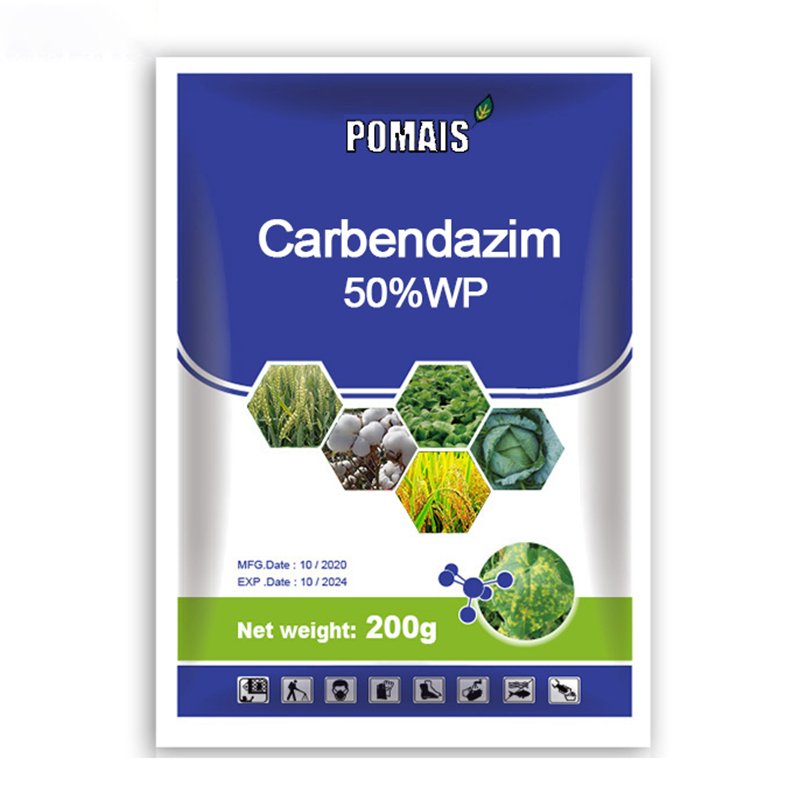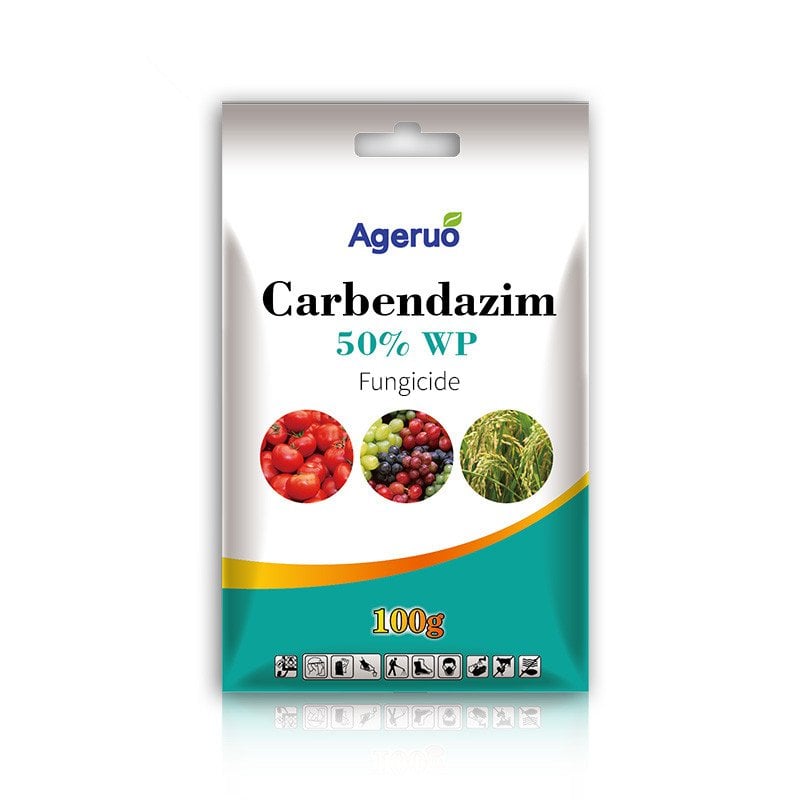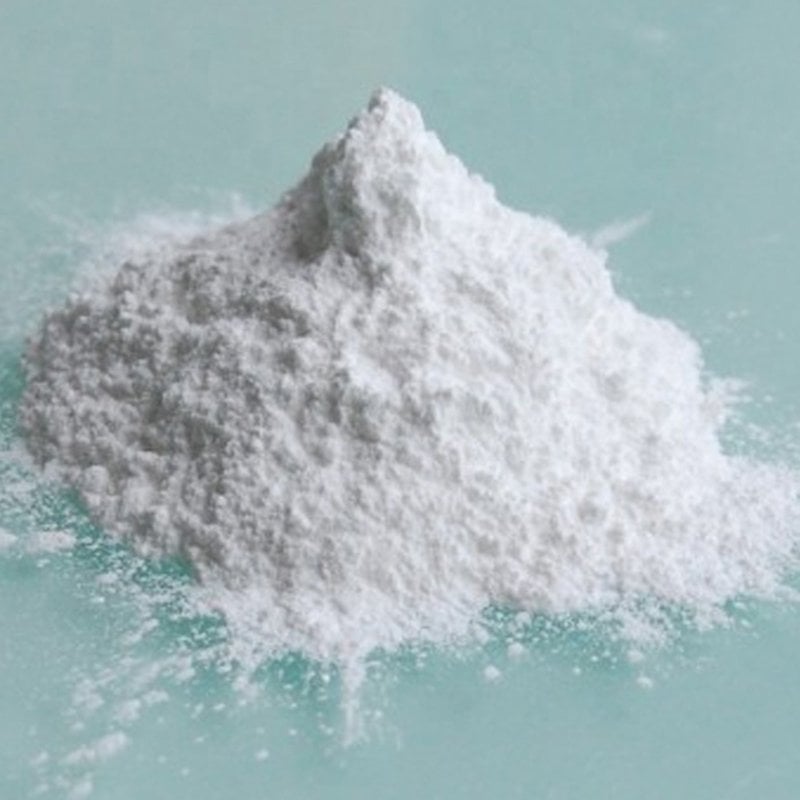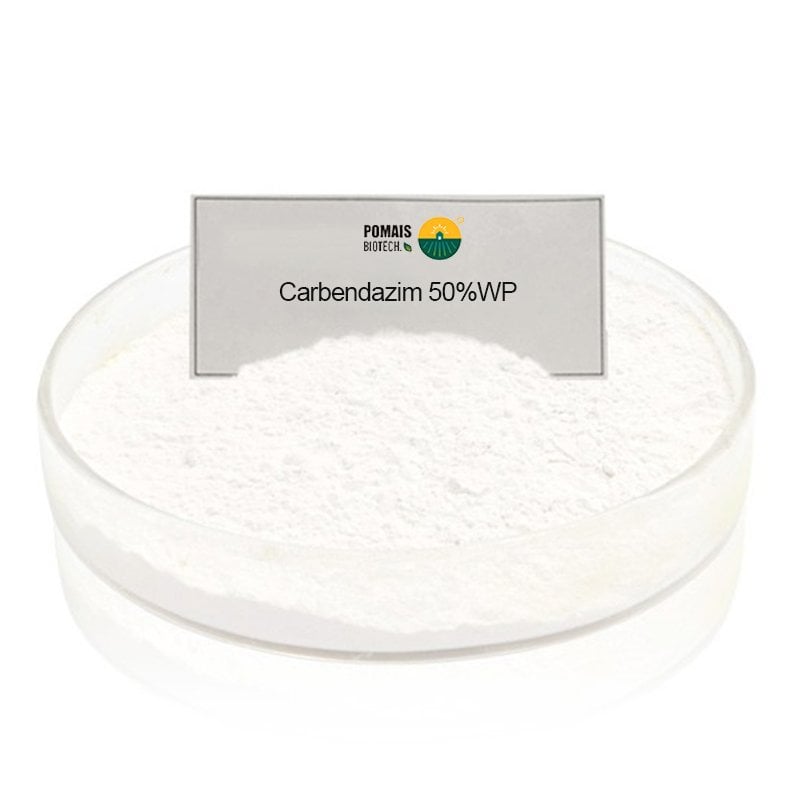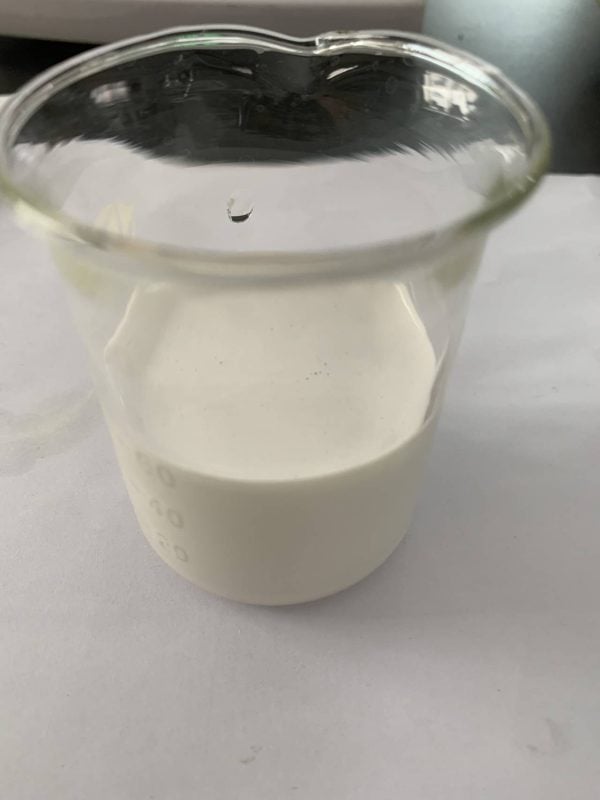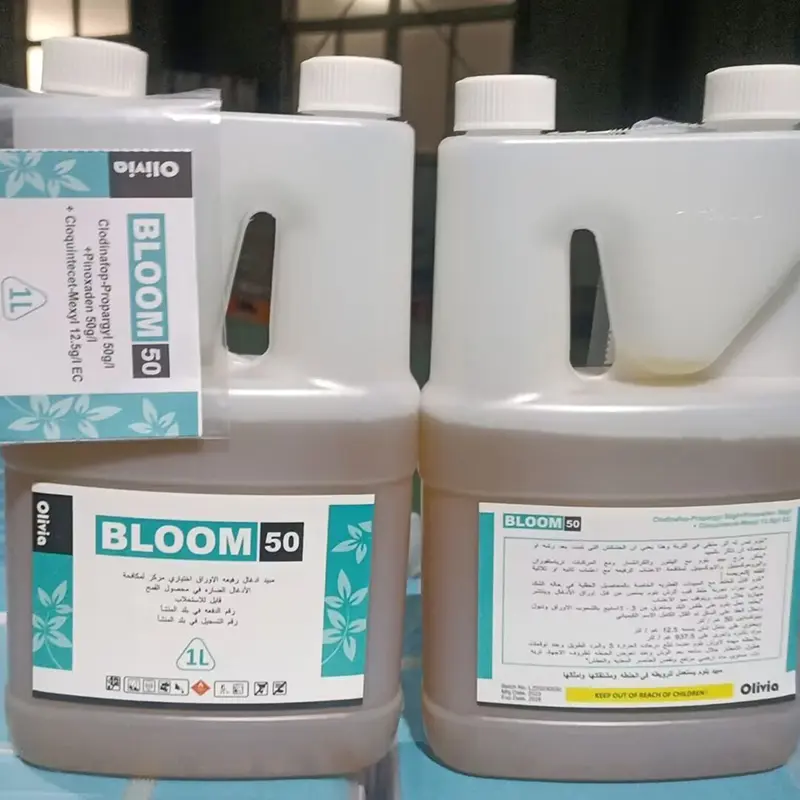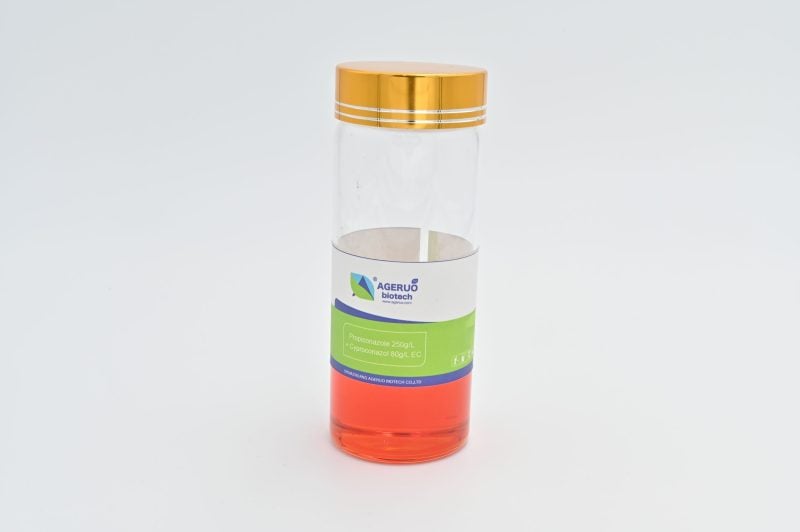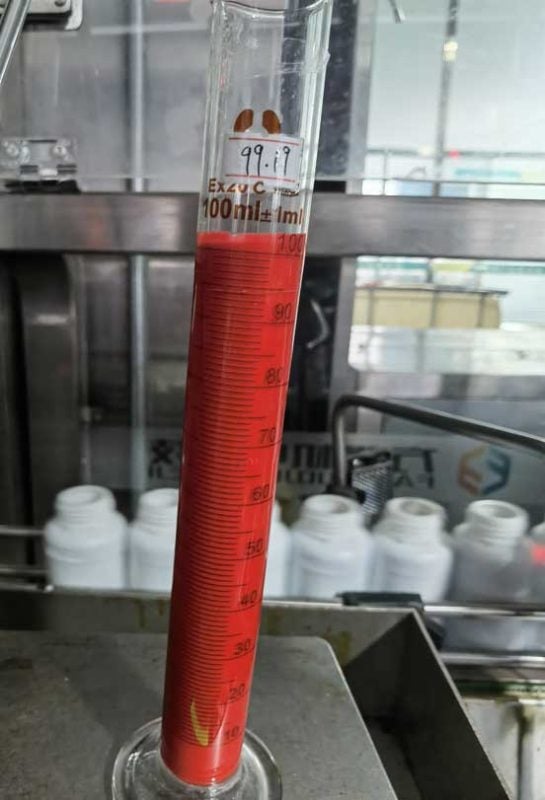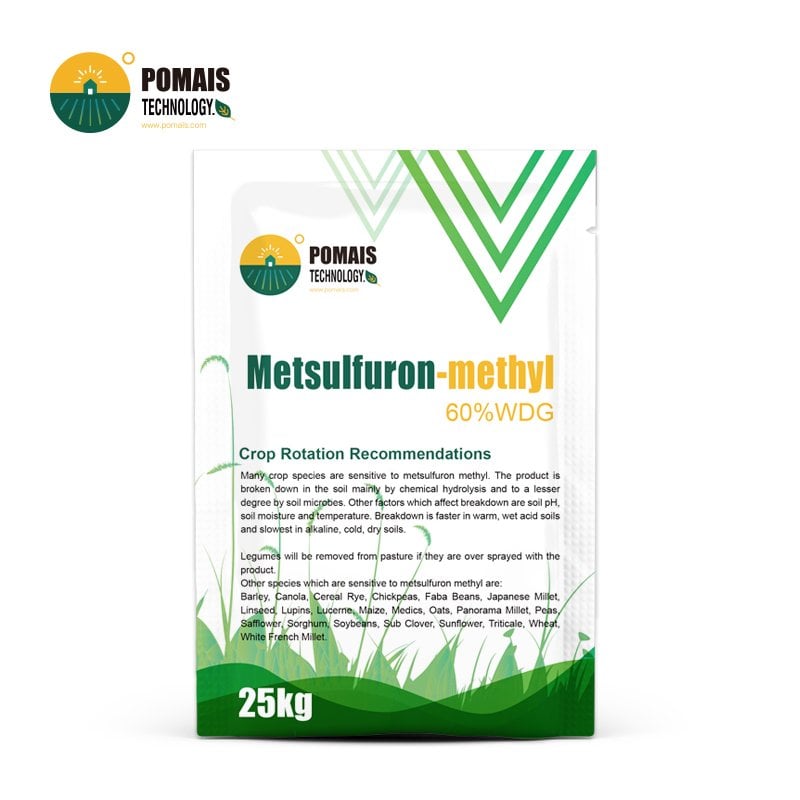Carbendazim Fungicide | Carbendazim for Plants
Carbendazim is a broad-spectrum, systemic fungicide used to control a variety of fungal diseases across different crops, including fruits, vegetables, cereals, and ornamentals. It belongs to the benzimidazole class of fungicides and is highly effective in preventing and controlling fungal infections such as powdery mildew, leaf spots, rust, anthracnose, and scab. Carbendazim is available in different formulations, including 50% WP, 80% WP, 50% SC, and 80% WDG, making it adaptable for various agricultural applications.
- Designed for Professional Buyers & Bulk Orders
- This product is available for business purchase and large-scale distribution.
- We support custom packaging, labeling, and formulation to meet your market needs.
- Let’s build your brand together.

About Carbendazim Fungicide | Carbendazim for Plants
About Carbendazim Fungicide | Carbendazim for Plants
| Product Name | Carbendazim (fungicide) |
| Active Ingredient | Carbendazim |
| CAS Number | 10605-21-7 |
| Molecular Formula | C9H9N3O2 |
| Target Pests/Diseases | Fungal diseases such as powdery mildew, leaf spot, anthracnose, and root rot |
| Applicable Crops | Fruits, vegetables, cereals, cotton, and ornamentals |
| Dosage | 0.5-1.0 kg per hectare |
| Mode of Action | Systemic fungicide; inhibits fungal cell division by disrupting mitosis |
| Tank Mix Compatibility | Can be tank-mixed with other fungicides or insecticides |
| Common Formulations | SC, WP, TC |
| Common Concentrations | 50%SC, 50%WP, 98%TC |
| Packaging Types | 1kg/bag, 5kg/bag, 25kg/drum |
| Pre-Harvest Interval | 14-21 days |
| Product Keywords | Carbendazim fungicide, Carbendazim fungicide price, Carbendazim fungicide products, Carbendazim systemic fungicide, Carbendazim for plants |
We provide high-quality Carbendazim Fungicide products with customized packaging and label design to meet the needs of our customers. Our products are manufactured under ISO 9001 certification, ensuring premium quality and consistent performance.
For more information on Carbendazim fungicide price, Carbendazim systemic fungicide, or to inquire about Carbendazim fungicide for sale, feel free to contact us!
Carbendazim Fungicide
Carbendazim Fungicide is an effective solution for managing a wide range of fungal diseases in fruits, vegetables, cereals, and ornamentals. Its systemic properties ensure long-lasting protection by moving throughout the plant, providing comprehensive disease control. Carbendazim is available in various formulations and packaging sizes to suit the needs of both large-scale agriculture and small farms.
Mode of Action
Carbendazim acts by inhibiting the synthesis of tubulin, an essential protein in fungal cell division, thereby preventing fungal growth and reproduction. Once absorbed, Carbendazim is translocated throughout the plant, protecting it from the inside out. It provides preventive and curative effects, making it suitable for both early-stage and established infections.
Formulations
- Carbendazim 50% WP
- Carbendazim 50% SC
- Carbendazim 80% WDG
- Carbendazim 80% WP
Combination Formulations
Carbendazim can be combined with other fungicides to broaden its spectrum:
- Carbendazim 35% + Thiophanate-Methyl 46.5% WP
- Carbendazim 50% + Difenoconazole 5% WP
- Carbendazim 15% + Iprodione 5% SC
- Carbendazim 25% + Prothioconazole 3% SC
- Carbendazim 35% + Tebuconazole 5% SC
- Carbendazim 25% + Fosetyl-Aluminium 25% WP
Benefits
- Systemic Protection: Moves through plant tissues, safeguarding treated and new growth.
- Broad-Spectrum Fungicide: Effective against foliar, soil-borne, and seed-borne diseases.
- Long-Lasting Control: Reduces frequency of applications.
- Multiple Formulations: Available in WP, SC, and WDG, suitable for diverse crops and methods.
Packaging Types
- 50% WP: 500g, 1kg, 5kg bags
- 80% WP: 1kg, 5kg, 25kg bags
- 50% SC: 1L, 5L containers
- 80% WDG: 1kg, 5kg packages
Application Methods and Target Diseases
| Formulation | Target Diseases | Application Method |
|---|---|---|
| 50% WP | Powdery mildew, leaf spots, anthracnose | Foliar spray |
| 80% WP | Rust, scab, anthracnose, root rot | Foliar spray, soil drench |
| 50% SC | Blight, powdery mildew, fusarium wilt | Foliar spray |
| 80% WDG | Scab, downy mildew, botrytis | Foliar spray |
Applications by Crop
| Crops | Target Diseases | Application Method |
|---|---|---|
| Cereals (wheat, barley) | Rust, leaf spot, fusarium head blight | Foliar spray |
| Fruits (apples, grapes) | Scab, anthracnose, powdery mildew | Foliar spray |
| Vegetables | Powdery mildew, downy mildew, blight | Foliar spray |
| Ornamentals | Leaf spots, rust, powdery mildew | Foliar spray |
| Pulses (peas, beans) | Anthracnose, root rot, blight | Soil drench, foliar spray |
Application Timing & Crop Growth Stage
For effective disease prevention and curative control, timing the application of Carbendazim according to crop growth stage and pathogen pressure is critical. Its systemic properties allow for both early intervention and mid-season protection, making it suitable for flexible scheduling in integrated disease management programs.
Recommended Timing by Crop:
| Crop Type | Target Growth Stage | Suggested Application Timing |
|---|---|---|
| Cereals | Tillering to heading | Apply preventively at early disease signs or during high-risk weather conditions |
| Fruit trees | Pre-bloom to fruit set | Start at early signs of powdery mildew or anthracnose; repeat every 10–14 days |
| Vegetables | Vegetative to flowering | Apply before disease onset, especially in humid conditions prone to blight or mildew |
| Ornamentals | Early growth to full bloom | Preventive sprays before visible symptoms; repeat under prolonged humidity |
| Pulses | Seedling to pod-fill | Treat at emergence for root rot and leaf spot prevention; repeat as necessary |
Application Frequency:
- Typically every 10–14 days, depending on disease severity, weather conditions, and crop sensitivity
- Follow local agronomic guidelines or resistance management programs for specific intervals and combinations
Proper timing ensures maximum absorption and translocation, delivering prolonged protection from root to foliage, while minimizing the risk of disease recurrence or spread.
Application Rates
| Crops | Dosage | Application Method |
|---|---|---|
| Cereals | 1.0-1.5 kg/ha | Foliar application |
| Fruits | 1.0-1.5 L/ha | Scab, powdery mildew |
| Vegetables | 0.8-1.2 kg/ha | Powdery mildew, blight |
| Ornamentals | 0.5-1.0 kg/ha | Rust, leaf spots |
(Always refer to product labels for precise dosage and application timing based on specific crops and diseases.)
Usage Instructions
| Formulation | Plants | Target Disease/Pest | Dosage | Application Method |
|---|---|---|---|---|
| 50% WP | Fruit Trees | Various Diseases | 500-1000x | Spray |
| Peanut | Seedling Failure | 1500g/ha | Spray | |
| Lotus | Root Leaf Diseases | 750-900g/ha | Spray | |
| Wheat | Scab | 1500g/ha | Spray | |
| Cotton | Seedling Diseases | 1:100 dilution | Seedling Treatment | |
| 50% SC | Fruit Trees | Various Diseases | 400-800x | Spray |
| Peanut | Seedling Failure | 1875g/ha | Spray | |
| Wheat | Scab | 1600x dilution | Spray | |
| Cotton | Seedling Diseases | 135x dilution | Spray |
Product Positioning & Market Trends
If you’re targeting markets that demand cost-effective, proven disease control solutions, Carbendazim fungicide remains one of the most dependable assets in any fungicide portfolio. While its use is restricted in some high-regulation countries, Carbendazim continues to be a top-selling fungicide in South America, Southeast Asia, Africa, and Central Asia—where performance, availability, and affordability matter most.
For agrochemical distributors and private-label brand owners, Carbendazim offers a unique value proposition:
- High market acceptance across both large-scale farms and smallholder sectors
- Flexible integration into your existing product line—available in WP, SC, WDG formats for multiple crops
- Reliable demand year-round, especially for cereal, fruit, and vegetable programs
- Supported by POMAIS’s full-service OEM model, from multilingual label design to ICAMA-compliant export documentation
As global growers face increasing disease pressure and limited fungicide access, Carbendazim remains a go-to solution for broad-spectrum protection at scale. Whether you’re expanding into competitive markets or strengthening your existing lineup, this product positions your business to meet real field needs—backed by a manufacturer with the capacity to deliver.
Resistance Management Strategy
As with all systemic fungicides, responsible use of Carbendazim is key to maintaining long-term field efficacy. Carbendazim belongs to the benzimidazole class (FRAC Code 1), which targets fungal mitosis by inhibiting tubulin formation. While highly effective, repeated solo applications can increase the risk of resistance development in certain pathogens.
To help your clients or downstream users maximize efficacy and preserve product value, POMAIS recommends the following resistance management strategies:
- Rotate with different FRAC groups: Alternate Carbendazim with triazoles (DMI), strobilurins (QoI), or contact fungicides such as mancozeb or chlorothalonil to disrupt resistance cycles.
- Avoid consecutive solo sprays: Use Carbendazim as part of a rotational program rather than in back-to-back applications.
- Integrate into IPM programs: Combine with cultural practices, resistant crop varieties, and threshold-based applications for sustainable disease control.
- Use mixtures for curative + protective effect: Consider premixes like Carbendazim + Thiophanate-Methyl or Carbendazim + Difenoconazole, available from POMAIS, for broader-spectrum protection and resistance delay.
By integrating these practices, distributors and agronomic advisors can confidently recommend Carbendazim as a technically sound, field-proven fungicide—with the added assurance of manufacturer support for resistance stewardship.
Regional Regulatory Status & Restrictions
Carbendazim’s regulatory status varies across global markets. While some high-regulation countries such as the European Union and parts of North America have restricted or withdrawn its use due to environmental or toxicological concerns, the active ingredient remains widely approved and used in Africa, Asia, Latin America, and the Middle East.
As a result, Carbendazim continues to serve as a key fungicide for both government-backed programs and private sector distribution in emerging and transitional agricultural economies.
To support your entry or expansion in these markets, POMAIS offers:
- ICAMA-registered formulations with full documentation
- Support for local registration dossiers, including COA, MSDS, TDS, and bioefficacy data
- Assistance with multi-language labeling and country-specific packaging compliance
- Proven shipping and delivery experience in more than 40+ countries across key agricultural zones
Our dedicated export team is available to help you navigate local requirements and accelerate your time-to-market with confidence.
Shelf Life & Storage Conditions
To ensure optimal performance during distribution, warehousing, and field use, Carbendazim formulations are engineered for long-term stability under standard storage conditions.
Shelf Life:
- Minimum 2 years from the date of manufacture
- Stability guaranteed when stored in original, unopened packaging
Storage Guidelines:
- Store in a cool, dry, and well-ventilated environment
- Avoid direct exposure to sunlight, heat, and moisture
- Keep away from food, feed, and drinking water sources
- Do not store below 0°C or above 35°C, especially for SC formulations
- Maintain containers tightly sealed when not in use
Proper storage ensures that Carbendazim retains its physical integrity, dispersion quality, and biological efficacy, giving distributors and end-users consistent performance even after long-distance transit.
At POMAIS, all shipments are quality-checked prior to dispatch, with batch-level traceability and customized labeling options to support warehouse management and compliance.
Sustainable Alternatives & Product Combinations
As market demand grows for resistance-aware and environmentally conscious crop protection, Carbendazim continues to serve as a reliable foundation that can be either combined or alternated with other fungicides to support a broader spectrum of control while aligning with modern sustainability goals.
Recommended Product Combinations:
| Combination Formula | Benefits | Recommended Use |
|---|---|---|
| Carbendazim + Thiophanate-Methyl (e.g., 35% + 46.5% WP) | Double benzimidazole action for enhanced persistence and soil activity | Ideal for fruit trees, vegetables, and pulses |
| Carbendazim + Difenoconazole (e.g., 50% + 5% WP) | Systemic + protectant spectrum; adds triazole activity for rotation | Cereal rust, powdery mildew, anthracnose |
| Carbendazim + Iprodione (e.g., 15% + 5% SC) | Complementary modes of action targeting seed-borne and soil fungi | For seed treatment, ornamental blight, and greenhouse crops |
| Carbendazim + Tebuconazole (e.g., 35% + 5% SC) | Enhanced curative and preventive control with two systemic actives | For high-value fruits, vegetables, and export crops |
Alternative Fungicides for Rotation or Resistance Management:
- Azoxystrobin – For broad-spectrum foliar protection and QoI class rotation
- Mancozeb – As a multi-site contact fungicide, ideal for tank mixing or alternating
- Triazoles (e.g., Propiconazole, Cyproconazole) – Offer long residual activity and DMI group rotation benefits
- Chlorothalonil – For durable contact protection against resistant fungal strains
At POMAIS, we offer a full catalog of single and combination fungicide formulations, each available with custom OEM services to support brand development and market differentiation. Our technical team can also assist in designing localized IPM-compatible programs based on your target crop, region, and disease profile.
Frequently Asked Questions (FAQ)
1. Is Carbendazim a systemic or contact fungicide?
Carbendazim is a systemic fungicide. It is absorbed by the plant and translocated internally, offering both preventive and curative protection against a wide range of fungal pathogens.
2. What types of fungal diseases does Carbendazim control?
Carbendazim is effective against:
- Powdery mildew
- Leaf spot
- Anthracnose
- Scab
- Root rot
- Fusarium wilt
Its broad-spectrum activity makes it suitable for fruits, vegetables, cereals, pulses, cotton, and ornamentals.
3. Can Carbendazim be mixed with other fungicides or insecticides?
Yes. Carbendazim is compatible with most common agrochemicals, including contact fungicides like Mancozeb and systemic products like Difenoconazole. Always conduct a jar test before large-scale mixing and refer to local label guidelines.
4. What are the common formulations available for Carbendazim?
We supply multiple forms including:
- 50% WP (wettable powder)
- 50% SC (suspension concentrate)
- 80% WP and WDG
- Combination products (e.g., Carbendazim + Thiophanate-Methyl, + Difenoconazole, etc.)
5. What is the standard application rate of Carbendazim?
Application rate varies by crop and formulation. General guidance:
- Fruits & vegetables: 0.8–1.5 kg or L per hectare
- Cereals: 1.0–1.5 kg/ha
- Ornamentals: 0.5–1.0 kg/ha
Always refer to the product label or consult with a local agronomist.
6. How long does Carbendazim remain effective after application?
When applied correctly, Carbendazim offers 7–14 days of residual protection, depending on environmental conditions and crop growth rate. Reapplication may be needed under high disease pressure.
7. Is Carbendazim safe for the environment?
Carbendazim should be handled and applied according to label instructions. While effective, it is subject to regulatory restrictions in some countries due to environmental and toxicological concerns. Use within recommended guidelines to minimize ecological impact.
8. Can you customize the packaging and labeling for our market?
Yes. POMAIS provides OEM and ODM services, including:
- Custom label design (single or multilingual)
- Various packaging sizes (500g to 25kg bags, 1L to 20L drums)
- Region-specific regulatory documentation support (COA, MSDS, TDS, ICAMA)
| Product Name | Carbendazim (fungicide) |
| Active Ingredient | Carbendazim |
| CAS Number | 10605-21-7 |
| Molecular Formula | C9H9N3O2 |
| Target Pests/Diseases | Fungal diseases such as powdery mildew, leaf spot, anthracnose, and root rot |
| Applicable Crops | Fruits, vegetables, cereals, cotton, and ornamentals |
| Dosage | 0.5-1.0 kg per hectare |
| Mode of Action | Systemic fungicide; inhibits fungal cell division by disrupting mitosis |
| Tank Mix Compatibility | Can be tank-mixed with other fungicides or insecticides |
| Common Formulations | SC, WP, TC |
| Common Concentrations | 50%SC, 50%WP, 98%TC |
| Packaging Types | 1kg/bag, 5kg/bag, 25kg/drum |
| Pre-Harvest Interval | 14-21 days |
| Product Keywords | Carbendazim fungicide, Carbendazim fungicide price, Carbendazim fungicide products, Carbendazim systemic fungicide, Carbendazim for plants |
We provide high-quality Carbendazim Fungicide products with customized packaging and label design to meet the needs of our customers. Our products are manufactured under ISO 9001 certification, ensuring premium quality and consistent performance.
For more information on Carbendazim fungicide price, Carbendazim systemic fungicide, or to inquire about Carbendazim fungicide for sale, feel free to contact us!
Carbendazim Fungicide
Carbendazim Fungicide is an effective solution for managing a wide range of fungal diseases in fruits, vegetables, cereals, and ornamentals. Its systemic properties ensure long-lasting protection by moving throughout the plant, providing comprehensive disease control. Carbendazim is available in various formulations and packaging sizes to suit the needs of both large-scale agriculture and small farms.
Mode of Action
Carbendazim acts by inhibiting the synthesis of tubulin, an essential protein in fungal cell division, thereby preventing fungal growth and reproduction. Once absorbed, Carbendazim is translocated throughout the plant, protecting it from the inside out. It provides preventive and curative effects, making it suitable for both early-stage and established infections.
Formulations
- Carbendazim 50% WP
- Carbendazim 50% SC
- Carbendazim 80% WDG
- Carbendazim 80% WP
Combination Formulations
Carbendazim can be combined with other fungicides to broaden its spectrum:
- Carbendazim 35% + Thiophanate-Methyl 46.5% WP
- Carbendazim 50% + Difenoconazole 5% WP
- Carbendazim 15% + Iprodione 5% SC
- Carbendazim 25% + Prothioconazole 3% SC
- Carbendazim 35% + Tebuconazole 5% SC
- Carbendazim 25% + Fosetyl-Aluminium 25% WP
Benefits
- Systemic Protection: Moves through plant tissues, safeguarding treated and new growth.
- Broad-Spectrum Fungicide: Effective against foliar, soil-borne, and seed-borne diseases.
- Long-Lasting Control: Reduces frequency of applications.
- Multiple Formulations: Available in WP, SC, and WDG, suitable for diverse crops and methods.
Packaging Types
- 50% WP: 500g, 1kg, 5kg bags
- 80% WP: 1kg, 5kg, 25kg bags
- 50% SC: 1L, 5L containers
- 80% WDG: 1kg, 5kg packages
Application Methods and Target Diseases
| Formulation | Target Diseases | Application Method |
|---|---|---|
| 50% WP | Powdery mildew, leaf spots, anthracnose | Foliar spray |
| 80% WP | Rust, scab, anthracnose, root rot | Foliar spray, soil drench |
| 50% SC | Blight, powdery mildew, fusarium wilt | Foliar spray |
| 80% WDG | Scab, downy mildew, botrytis | Foliar spray |
Applications by Crop
| Crops | Target Diseases | Application Method |
|---|---|---|
| Cereals (wheat, barley) | Rust, leaf spot, fusarium head blight | Foliar spray |
| Fruits (apples, grapes) | Scab, anthracnose, powdery mildew | Foliar spray |
| Vegetables | Powdery mildew, downy mildew, blight | Foliar spray |
| Ornamentals | Leaf spots, rust, powdery mildew | Foliar spray |
| Pulses (peas, beans) | Anthracnose, root rot, blight | Soil drench, foliar spray |
Application Timing & Crop Growth Stage
For effective disease prevention and curative control, timing the application of Carbendazim according to crop growth stage and pathogen pressure is critical. Its systemic properties allow for both early intervention and mid-season protection, making it suitable for flexible scheduling in integrated disease management programs.
Recommended Timing by Crop:
| Crop Type | Target Growth Stage | Suggested Application Timing |
|---|---|---|
| Cereals | Tillering to heading | Apply preventively at early disease signs or during high-risk weather conditions |
| Fruit trees | Pre-bloom to fruit set | Start at early signs of powdery mildew or anthracnose; repeat every 10–14 days |
| Vegetables | Vegetative to flowering | Apply before disease onset, especially in humid conditions prone to blight or mildew |
| Ornamentals | Early growth to full bloom | Preventive sprays before visible symptoms; repeat under prolonged humidity |
| Pulses | Seedling to pod-fill | Treat at emergence for root rot and leaf spot prevention; repeat as necessary |
Application Frequency:
- Typically every 10–14 days, depending on disease severity, weather conditions, and crop sensitivity
- Follow local agronomic guidelines or resistance management programs for specific intervals and combinations
Proper timing ensures maximum absorption and translocation, delivering prolonged protection from root to foliage, while minimizing the risk of disease recurrence or spread.
Application Rates
| Crops | Dosage | Application Method |
|---|---|---|
| Cereals | 1.0-1.5 kg/ha | Foliar application |
| Fruits | 1.0-1.5 L/ha | Scab, powdery mildew |
| Vegetables | 0.8-1.2 kg/ha | Powdery mildew, blight |
| Ornamentals | 0.5-1.0 kg/ha | Rust, leaf spots |
(Always refer to product labels for precise dosage and application timing based on specific crops and diseases.)
Usage Instructions
| Formulation | Plants | Target Disease/Pest | Dosage | Application Method |
|---|---|---|---|---|
| 50% WP | Fruit Trees | Various Diseases | 500-1000x | Spray |
| Peanut | Seedling Failure | 1500g/ha | Spray | |
| Lotus | Root Leaf Diseases | 750-900g/ha | Spray | |
| Wheat | Scab | 1500g/ha | Spray | |
| Cotton | Seedling Diseases | 1:100 dilution | Seedling Treatment | |
| 50% SC | Fruit Trees | Various Diseases | 400-800x | Spray |
| Peanut | Seedling Failure | 1875g/ha | Spray | |
| Wheat | Scab | 1600x dilution | Spray | |
| Cotton | Seedling Diseases | 135x dilution | Spray |
Product Positioning & Market Trends
If you’re targeting markets that demand cost-effective, proven disease control solutions, Carbendazim fungicide remains one of the most dependable assets in any fungicide portfolio. While its use is restricted in some high-regulation countries, Carbendazim continues to be a top-selling fungicide in South America, Southeast Asia, Africa, and Central Asia—where performance, availability, and affordability matter most.
For agrochemical distributors and private-label brand owners, Carbendazim offers a unique value proposition:
- High market acceptance across both large-scale farms and smallholder sectors
- Flexible integration into your existing product line—available in WP, SC, WDG formats for multiple crops
- Reliable demand year-round, especially for cereal, fruit, and vegetable programs
- Supported by POMAIS’s full-service OEM model, from multilingual label design to ICAMA-compliant export documentation
As global growers face increasing disease pressure and limited fungicide access, Carbendazim remains a go-to solution for broad-spectrum protection at scale. Whether you’re expanding into competitive markets or strengthening your existing lineup, this product positions your business to meet real field needs—backed by a manufacturer with the capacity to deliver.
Resistance Management Strategy
As with all systemic fungicides, responsible use of Carbendazim is key to maintaining long-term field efficacy. Carbendazim belongs to the benzimidazole class (FRAC Code 1), which targets fungal mitosis by inhibiting tubulin formation. While highly effective, repeated solo applications can increase the risk of resistance development in certain pathogens.
To help your clients or downstream users maximize efficacy and preserve product value, POMAIS recommends the following resistance management strategies:
- Rotate with different FRAC groups: Alternate Carbendazim with triazoles (DMI), strobilurins (QoI), or contact fungicides such as mancozeb or chlorothalonil to disrupt resistance cycles.
- Avoid consecutive solo sprays: Use Carbendazim as part of a rotational program rather than in back-to-back applications.
- Integrate into IPM programs: Combine with cultural practices, resistant crop varieties, and threshold-based applications for sustainable disease control.
- Use mixtures for curative + protective effect: Consider premixes like Carbendazim + Thiophanate-Methyl or Carbendazim + Difenoconazole, available from POMAIS, for broader-spectrum protection and resistance delay.
By integrating these practices, distributors and agronomic advisors can confidently recommend Carbendazim as a technically sound, field-proven fungicide—with the added assurance of manufacturer support for resistance stewardship.
Regional Regulatory Status & Restrictions
Carbendazim’s regulatory status varies across global markets. While some high-regulation countries such as the European Union and parts of North America have restricted or withdrawn its use due to environmental or toxicological concerns, the active ingredient remains widely approved and used in Africa, Asia, Latin America, and the Middle East.
As a result, Carbendazim continues to serve as a key fungicide for both government-backed programs and private sector distribution in emerging and transitional agricultural economies.
To support your entry or expansion in these markets, POMAIS offers:
- ICAMA-registered formulations with full documentation
- Support for local registration dossiers, including COA, MSDS, TDS, and bioefficacy data
- Assistance with multi-language labeling and country-specific packaging compliance
- Proven shipping and delivery experience in more than 40+ countries across key agricultural zones
Our dedicated export team is available to help you navigate local requirements and accelerate your time-to-market with confidence.
Shelf Life & Storage Conditions
To ensure optimal performance during distribution, warehousing, and field use, Carbendazim formulations are engineered for long-term stability under standard storage conditions.
Shelf Life:
- Minimum 2 years from the date of manufacture
- Stability guaranteed when stored in original, unopened packaging
Storage Guidelines:
- Store in a cool, dry, and well-ventilated environment
- Avoid direct exposure to sunlight, heat, and moisture
- Keep away from food, feed, and drinking water sources
- Do not store below 0°C or above 35°C, especially for SC formulations
- Maintain containers tightly sealed when not in use
Proper storage ensures that Carbendazim retains its physical integrity, dispersion quality, and biological efficacy, giving distributors and end-users consistent performance even after long-distance transit.
At POMAIS, all shipments are quality-checked prior to dispatch, with batch-level traceability and customized labeling options to support warehouse management and compliance.
Sustainable Alternatives & Product Combinations
As market demand grows for resistance-aware and environmentally conscious crop protection, Carbendazim continues to serve as a reliable foundation that can be either combined or alternated with other fungicides to support a broader spectrum of control while aligning with modern sustainability goals.
Recommended Product Combinations:
| Combination Formula | Benefits | Recommended Use |
|---|---|---|
| Carbendazim + Thiophanate-Methyl (e.g., 35% + 46.5% WP) | Double benzimidazole action for enhanced persistence and soil activity | Ideal for fruit trees, vegetables, and pulses |
| Carbendazim + Difenoconazole (e.g., 50% + 5% WP) | Systemic + protectant spectrum; adds triazole activity for rotation | Cereal rust, powdery mildew, anthracnose |
| Carbendazim + Iprodione (e.g., 15% + 5% SC) | Complementary modes of action targeting seed-borne and soil fungi | For seed treatment, ornamental blight, and greenhouse crops |
| Carbendazim + Tebuconazole (e.g., 35% + 5% SC) | Enhanced curative and preventive control with two systemic actives | For high-value fruits, vegetables, and export crops |
Alternative Fungicides for Rotation or Resistance Management:
- Azoxystrobin – For broad-spectrum foliar protection and QoI class rotation
- Mancozeb – As a multi-site contact fungicide, ideal for tank mixing or alternating
- Triazoles (e.g., Propiconazole, Cyproconazole) – Offer long residual activity and DMI group rotation benefits
- Chlorothalonil – For durable contact protection against resistant fungal strains
At POMAIS, we offer a full catalog of single and combination fungicide formulations, each available with custom OEM services to support brand development and market differentiation. Our technical team can also assist in designing localized IPM-compatible programs based on your target crop, region, and disease profile.
Frequently Asked Questions (FAQ)
1. Is Carbendazim a systemic or contact fungicide?
Carbendazim is a systemic fungicide. It is absorbed by the plant and translocated internally, offering both preventive and curative protection against a wide range of fungal pathogens.
2. What types of fungal diseases does Carbendazim control?
Carbendazim is effective against:
- Powdery mildew
- Leaf spot
- Anthracnose
- Scab
- Root rot
- Fusarium wilt
Its broad-spectrum activity makes it suitable for fruits, vegetables, cereals, pulses, cotton, and ornamentals.
3. Can Carbendazim be mixed with other fungicides or insecticides?
Yes. Carbendazim is compatible with most common agrochemicals, including contact fungicides like Mancozeb and systemic products like Difenoconazole. Always conduct a jar test before large-scale mixing and refer to local label guidelines.
4. What are the common formulations available for Carbendazim?
We supply multiple forms including:
- 50% WP (wettable powder)
- 50% SC (suspension concentrate)
- 80% WP and WDG
- Combination products (e.g., Carbendazim + Thiophanate-Methyl, + Difenoconazole, etc.)
5. What is the standard application rate of Carbendazim?
Application rate varies by crop and formulation. General guidance:
- Fruits & vegetables: 0.8–1.5 kg or L per hectare
- Cereals: 1.0–1.5 kg/ha
- Ornamentals: 0.5–1.0 kg/ha
Always refer to the product label or consult with a local agronomist.
6. How long does Carbendazim remain effective after application?
When applied correctly, Carbendazim offers 7–14 days of residual protection, depending on environmental conditions and crop growth rate. Reapplication may be needed under high disease pressure.
7. Is Carbendazim safe for the environment?
Carbendazim should be handled and applied according to label instructions. While effective, it is subject to regulatory restrictions in some countries due to environmental and toxicological concerns. Use within recommended guidelines to minimize ecological impact.
8. Can you customize the packaging and labeling for our market?
Yes. POMAIS provides OEM and ODM services, including:
- Custom label design (single or multilingual)
- Various packaging sizes (500g to 25kg bags, 1L to 20L drums)
- Region-specific regulatory documentation support (COA, MSDS, TDS, ICAMA)
Related Products
Latest News

